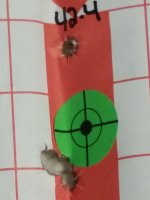So as I made mention in another thread im getting a big increase in neck runout. Im only seeing the jump from .001 (after full length sizing) to in some cases .010+ after sizing the necks via a collet and gauge pins.
So whats the best way to go about trimming the OD to get back to the more concentric neck before I set the neck tension?
So whats the best way to go about trimming the OD to get back to the more concentric neck before I set the neck tension?

